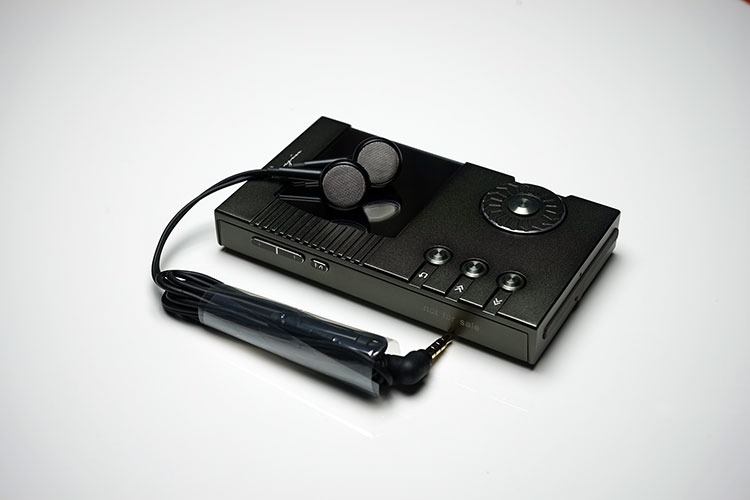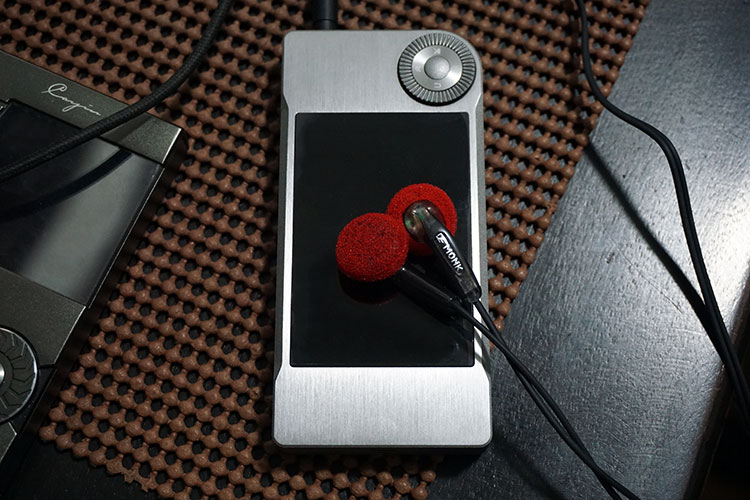The FiiO EM3 is the first official earbud design from the company featuring a 14.8mm open-back driver design and costing only $9.99.
Disclaimer: The FiiO EM3 sent to us is a sample in exchange for our honest opinion. We thank FiiO for this opportunity.
To learn more about FiiO reviews on Headfonics you can click here. You can also read up on the EM5 reviewed in 2020 here.
Note, this review follows our new scoring guidelines for 2020 which you can read up on here.
Ok so remember that “throwaway” earbud with the excellent budget FiiO M3 DAP I paid not too much attention to in the M3 review? Well its back as a FiiO product in its own right, well sort of.
With some upgrades, FiiO has finally launched it’s first wholly designed and commissioned earbud onto the market called the EM3 and it costs a mere $9.99.
Let me put $9.99 into some sort of fiscal perspective. That is half the price of an evening movie ticket at AMC Loews on Manhattan’s Upper West Side, the same price as a wholly unsatisfactory small beef dish I had on Father Day in Max’s Diner and almost half the price of a single trip northbound on the M50 bridge coming out of Dublin on a Friday night during rush hour.
In short, would you really miss that $10 if things went south with the EM3? Probably not in the long run which means FiiO has half the battle won already.
What’s the Pitch?
Ok, so it would be all too easy to cast an eye on the EM3 and ask why bother when you can get it with the M3 DAP? Well, of course, it is born out of that original earbud however as a standalone product FiiO decided some upgrades were required to keep you away from Manhattan’s finest movie house with your white version and an M3 in tow.
Like the original white OEM, the EM3 still packs a meaty 14.8mm dynamic driver, but unlike the OEM, this time, the impedance has been upped significantly to 47 ohms. This for me is probably the most significant upgrade on a technical level.
It is not quite Go Pro FAAEAL 300ohm levels which would have been a really interesting proposition for audiophiles but then again not too many people considering throwing a $10 investment into earbuds are likely to have a player capable of getting the most out of 300-ohm earbuds. At that level, you would see vanishing returns for FiiO and a small user base and, well, goodbye any profits.
FiiO’s argument for 47 ohms was based on a compromise. Raise the impedance high enough in order to reduce the distortion low enough so the best quality sound can be achieved on the widest variety of sources be that the M3, smartphone or AK. A catch-all scenario in a nutshell.
Design
There are not too many differences in the build of the EM3 over the white OEM included in the M3 package. The major visual difference being the color change from white to a more subdued mix of matte and glossy black.
For those that have not used the OEM white version included in the M3, it is actually a fairly well-designed 13.6g earbud with some nice streamlined contours and a minimalist finish on the driver’s hard plastic housing. Side by side, say with a Yuin PK1 design, they certainly look a bit sleeker and more modern.
I also like the fact that FiiO finished the EM3 with a silver metal mesh on each driver. At this price level, you are more likely to be getting a solid plastic grooved finish such as the Senn MX170 and it does give the EM3 a more premium look. The EM3 stem design is also quite svelte and possibly on the thin side, certainly thinner than the VE Monk + though nowhere near as discrete or as short as the more premium Celsus Gramo One. Interestingly, the EM3 does have a pair of strain reliefs unlike the premium Gramo One or the even cheaper VE Monk + which should help with the durability of the EM3.
Fit & Isolation
Well, of course, it is an earbud, my feelings are usually clear on why I prefer IEM’s over earbuds with that the lack of isolation and the EM3 is no different in that respect. You will find yourself with a looser fit also than an IEM but for those who do not like a deep insertion and a more open-ended listening experience the EM3 should fit the bill nicely.
I did find myself moving them around a little bit more for a comfortable fit than the Celsus Gramo One due to the longer stems of the EM3 but nothing unusual for an earbud. A lack of background noise will be to the benefit of the EM3 though given the porous nature of earbuds.
Indoors listening will maximize the potential of the EM3. They are also made to be worn straight down and with the use of foams you do get a more comfortable fit and an ever so slightly better seal but it will change how the EM3 compared to using them without foams.
Cables & Accessories
One of the other upgrades FiiO has decided to implement from the white OEM version is the addition of a mic on the remote inline of the EM3 1.2m cable as well as introducing an l-shaped 3.5mm jack which replaces the previous straight jack 3.5mm.
The jack does feel like a good upgrade with a more durable strain relief finish and offers a more streamlined form factor for connecting to DAPs and phones. The addition of the mic is a pretty obvious pitch to phone users also and it works pretty well with decent voice clarity during use.
FiiO, being FiiO, has given the EM3 a fairly presentable and efficient cardboard retail box with 3 spare sets of foams. It’s a clear upgrade on the scientific specimen plastic bag feel to the VE Monk + and though not as complex and showy as say the Sennheiser MX170 packaging it does feel less fussy and easier to work with.
Sound Impressions
Tonality
Without Foams
The EM3 without foams produces a neutral tonality with a good balance right across the frequency. It’s a clean but thin sounding presentation with a bit of lower treble splashiness and peaking that I wasn’t terribly fond of.
Without foams, you do lose a lot of bass depth, body, and slam due to excessive leakage. In fact, leakage was so high I ended up jacking up the volume by a considerable amount to compensate which can’t be good.
Due to the shape of my left ear, it was also dreadfully uncomfortable and simply too loose making it more of an endurance test than an enjoyable listening experience.
Without the foams, it becomes a predominantly midrange experience, and whilst I enjoyed the additional level of clarity and quick tempo it just felt far too one dimensional and compressed to make me want to listen to it more than a few minutes.
If you can get a better fit then you might take to the slightly more neutral and cleaner response the EM3 can offer without foams but I would not pair them with any music that requires a decent bass kick. In this format acoustics and stripped-down string music works best where a cleaner attack on the string plucks brings greater rewards.
With Foams
Quite apart from the dramatic leap in left ear comfort the EM3, with the foams on, offers a rounded, softer, and warmer tonal presentation that does not sound as clean and clear as without foams but introduced a much thicker note and a fuller bass and lower midrange performance. This made a big difference to my enjoyment of the EM3.
On balance, I would take this option over the EM3 without foams; better musicality, fuller sound, and more natural-sounding midrange, particularly the vocal presence. The Treble does take a bit of a hit but gone is that bit of splashiness and slightly grating lower treble performance making it a smoother and more forgiving top end.
With the addition of the foams, the EM3 still doesn’t convey huge amounts of slam in its bass presentation but thankfully it sounds fuller than the anemic non-foam version. What I will give props to the EM3 is the speed of the bass and lack of bass bloat which remains impressive with a natural decay despite the fuller body.
The soundstage also with the foams seems a lot more coherent with better depth and width than the leaky non-foam presentation which sounded very compressed and one-dimensional in comparison. This is generally a strength for me with buds.
You do give up the seal and slam but in return, you get a much more open sounding soundstage and plenty of air and above-average separation. Perhaps the only thing missing from the Em3’s soundstage is the lack of treble extension with the foams but overall it sounds reasonably spacious.
Synergy
Power
This is a 47-ohm 109dB earphone and as such, there is enough for a weaker amped smartphone to get decent volume on the EM3 without sounding particularly bad though only just. My own BB Passport was in portable headphone territory at 8/10 digital steps.
By way of contrast, the FiiO X7, using the AM5, drove the EM3 with greater ease but it also needed a lot more juice pushing it to 73 steps on its own digital volume on low gain.
The Cayin N5 had also the same end result pushing an incredibly high 40 steps on the low gain which is about 5 steps higher than the PM-3 from Oppo. Wouldn’t it be fun to see a balanced version of the EM3 at this rate?
Tonal Matching
That being said the EM3, when properly driven, provides superior resolution and detail than weaker smartphone amps; more so if your source or amp has a cooler or cleaner signature which prevents the EM3 with foams from becoming overly warm and muddy sounding.
DAPs with a musical but clean presentation do particularly well, teasing out a bit more bass than flatter or more neutral signatures such as the Opus#1. The Opus#1 tended to do better with detail and was one of the best to tease out the EM3’s imaging and soundstage capabilities.
On the flip side, the Cayin N5’s sharper attack is a nice compliment to the rounded presentation of the EM3 with foams. If you enjoyed that bit cleaner edge from the EM3 without foams but wanted more body, then the N5 does provide a very nice compromise in that respect.
Perhaps the best mid-fi match both in terms of musicality and resolution was the pairing was the M5 from Shanling. Gone was that overly rounded soft treble and in comes a cleaner presentation with far superior articulation, a very natural and clear vocal presence and yet still retaining that full, yet pacey, bass response with the foams.
Granted it’s a big investment to get the best out of a $9.99 earbud but it does show that the EM3 is more capable the better the source you throw at it.
Select Comparisons
VE Monk +
The Monks are even cheaper than the EM3 at around $5 which is ridiculous, to be honest. They are built like a tank compared to the EM3 with thicker stems, easily distinguishable left and right labels, and a thicker cable but with a straight jack 3.5mm termination.
They are slightly less comfortable than the EM3 in the ear though. Side to side with foams on the Monk is just a tiny bit bigger and thus a little looser in the ear. Rated at 64 ohms they require a little more juice to flow freely over the EM3 but not by a huge amount, 4-5 steps on the Shanling M5 on low-gain to be precise.
I am not sure how much of a bigger audio bargain you can get with the Monk +, to be honest. It sounds fantastic for $5 and a nice complimentary sound signature to the EM3. Instead of a thicker warmer sound from the EM3, you instead get a cleaner and more neutral sound with far more sparkle in its treble performance.
I am not convinced it has more detail than the EM3, simply it is engineered with a more forward sounding treble which can often give the impression of more detail. However, the snap and energy in the lower treble are welcome additions to the sometimes overly smoothed out EM3.
It is not as refined though as the Lyra 6 with some vocals suffering overly with a sibilant performance but then again it is just $5. Of the two the Monk has a better sub-bass presence. It is also tighter, snappier overall compared to the full but warmer sounding EM3 bass response.
Both have very soundstages but the Monk’s extension is superior with a less rolled off and brighter treble performance and more tangible sub-bass hit.
If you want a more soothing tone the EM3 is the better of the two, but if you fancy a bit of a cleaner signature with a more forward and energetic treble performance, then the Monk + is superior. Go on then, splash out the full $15, and have both!
Astrotec Lyra 6
A huge step up in resolution, layering, and separation over both the Monk and the EM3 but then again this is a $180 earbud. It also has an excellent ear hook mechanism that provides a very stable positioning system to maximize the Lyra’s potential. the stems and body are smaller also making it a lot more comfortable in the ear.
This is a neutral but very natural sounding earbud. Highs are very sweet and detailed and not an ounce of grating or peakiness. Dynamics are fantastic right across the board with the Lyra 6 with a very spacious soundstage and excellent extension.
The bass performance is no different from the EM3 in terms of quantity but the detail and refinement are very good and more akin to listening with a quality mid-range open headphone than an earbud.
Our Verdict
This review probably cost more than the EM3 itself but it really doesn’t matter if it is $9.99 or $999 if you find something you like it is worth writing about it and never let it be said audiophiles are always eager to jump into the pit of vanishing returns. If it sounds good then why not, the Manhattan movie house can wait another weekend.
Ultimately, the EM3 is a no-risk investment for those who like the more open and spacious sound an earbud can give over an IEM and really do not want to spend a whole lot of cash in the process.
It’s a warm full sounding earbud at home with rock, pop, and other modern genres, and its setup really for an easy on the ear listening sessions. It won’t isolate much but then tell us something new about a bud.
It does have competition though in the form of the VE Monk + which sells for even less. That cleaner and brighter sound with a slightly superior bass performance will have plenty of fans for those who like a bit of a sharper attack in their audio.
My advice is to buy both and sit them side by side; the Monk for clarity and the warmer EM3 for crunching rock. That is a total of around $15 not including shipping. That is still less than that darn movie ticket in Manhattan.
FiiO EM3 Technical Specifications
- Driver Unit: 14.8 mm driver (8 part driver design)
- Impedance: 47 Ohm
- Sensitivity: 109dB
- Weight: 13.6 g





